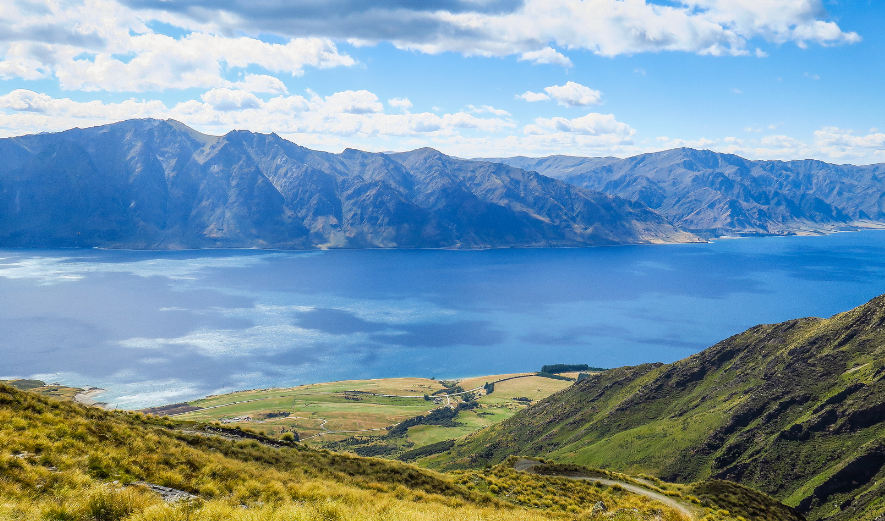
(The city of Cokewanibuni and its cemetery)
The city of Kirkwanibuni and its mausoleum, located in the province of Nable, are by far the best preserved of the ancient Carthaginian ruins, which have only been partially destroyed since the 2nd century BC.
(Iqur National Park)
The Ecchikur National Park is located in the Martel Plain region, about 25 km southwest of Bisse, 15 km north of Martel, north of Bisse, Tunisia, about 30 km southwest of the Mediterranean coast. There is a highway leading to the park entrance.
(Amphitheater of Jem)
The Colosseum of Jem is an ancient Roman arena in Tunisia. It's the best preserved Roman Colosseum in the world.
(The city of Tunis)
Tunis is a scenic coastal city with 20 kilometers of beaches that attract millions of foreign tourists every year. The city consists of two parts, the old and the new.
The Old city of MEDINA is a symbol of traditional Islamic urban architecture, retaining the traditional layout and architectural style of the city from various historical periods since the Arab conquest of North Africa in the 7th century, among which the Zaydun Mosque was built in 704 AD and rebuilt in 864.
The old city is a collection of housing, handicraft and commercial functions, a total of 2,800 handicraft workshops (including wood, metal, jewelry, leather, textiles, food, flavor, etc.), 3,050 shops, 1,050 commercial service points, has been UNESCO World Heritage list.
Medina's traditional crafts and businesses are geared towards tourists. Medina's Arab market, which attracts thousands of foreign tourists, is alleyway by alleyway, each of which is a kind of craft house, producing specific goods and maintaining the traditional decentralized production of small workshops.
There are bronze alley, gold and silver handwork alley, spice alley, Arabian hat alley, Arabic clothing alley, olive wood alley, carpet alley and so on. In every alley, piled on the floor and hung on the walls, all kinds of dazzling goods, a rich Arab market color.
(Sous)
Souss is an important tourist city in Tunisia, 150 km from the capital Tunis. Sous has a long history, in the 9th century BC, the Phoenicians established a prosperous trading house "Hatumet" here, its commercial activities have been uninterrupted during the Carthage and Roman rule.
By the time the Arabs entered North Africa, Souss was already an important city, serving as a coastal defense stronghold and a base for Muslim expeditions to Malta, Sardinia, Sicily, and southern Europe.
Sousse has a well-developed tourism industry, with both well-preserved ancient cities and unique seaside scenery, making it the second largest seaside resort base in Tunisia. All kinds of star-rated hotels and guesthouses built along the seashore are row upon row, with different styles and shapes.
Every year a large number of foreign tourists come for sightseeing and vacation. Seuss attracts the second largest number of tourists in the country every year. The Old City of Medina is one of the main attractions of the city of Souss and has been included in the UNESCO World Heritage List. The old town owes its fame to its old castle and Grand Mosque.Located in the northern part of the city of Sousse, the Kontavi Tourist Center was built in the 1970s and covers an area of 307 hectares. The tourist center consists mainly of a number of luxury hotels, tourist villas and various other tourist facilities, with 15,000 beds. The centre has a harbour with more than 300 yachts. There is also a 70-hectare golf course.
(Bizerte)
Bissette is located in northern Tunisia, on the Mediterranean Sea, and is connected to the city by a movable bridge across the waterway. The old harbor, sea walls and outdoor cafes are popular places. Walking through the city, you can see the fountain built in 1642, and the 17th century Ribaa Mosque and its square minarets.
In the Old City, craftsmen weave, tap and paint along the narrow streets leading to the Grand Mosque. To the north of the Great Mosque are the alleys with the Andalusian vaults and the Moorish houses. The 16th century Spanish fortress on the top of the hill is now an open-air theatre where the annual arts festival takes place and visitors can enjoy panoramic views of the city.
The path beside the cliff attracts walkers. The depths of Cape Angela are good for fishing. Art Nouveau buildings such as City Hall, colorful gardens and aquatic clubs reflect the glory of the past.

